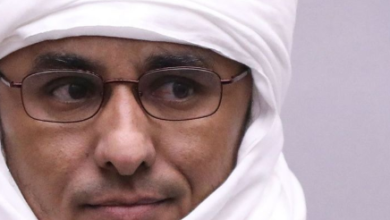Danish elections could pave way for a center government

COPENHAGEN, Denmark — Danes were voting Tuesday in a parliamentary election Prime Minister Mette Frederiksen was forced to call amid the fallout from her government’s contentious decision to cull millions of minks as a pandemic response measure.
The cull and chilling images of mass graves of minks have haunted Frederiksen since 2020 and eventually led to cracks in the center-left bloc that backed her Social Democratic minority government in Parliament.
The 44-year-old now hopes to continue to govern in a broader alliance that would also include opposition parties, an idea so far rejected by opposition leaders Jakob Ellemann-Jensen of the Liberals and Søren Pape Poulsen of the Conservatives, both who are running as candidates for prime minister in a center-right government.
“We are fighting to the end. It will be a close election,” Frederiksen said after voting north of Copenhagen. “I am optimistic but I am not sure of anything.”
Denmark may be a small, tranquil country known for having some of the happiest people on Earth, but its politics is filled with intrigue that will be familiar to fans of the fictional Danish TV drama series “Borgen.”
Judging by opinion polls, no single party or bloc is likely to get the votes needed to form a government on their own. Instead, the next government is likely to emerge from post-election backroom talks in which former Prime Minister Lars Løkke Rasmussen could emerge as a central player.
A two-time government leader who lost the 2019 election to Frederiksen and abandoned the center-right Liberal party following an internal power struggle, Løkke Rasmussen has formed his own party, the Moderates, in the political center. Officially launched just four months ago, the Moderates have been polling around 10% which could put them in the position of kingmaker.
Løkke Rasmussen has refused to say whether he would lend his support to either side, but has hinted he could see his party in a coalition spanning the left-right divide. Given his reputation as a strong negotiator, some analysts believe Løkke Rasmussen could even emerge as the prime minister of a coalition government.
Denmark’s more than 4 million voters can choose among over 1,000 candidates — the most ever — from 14 parties. Four of the 179 seats in the Danish legislature, Folketinget, are reserved for the Faeroe Islands and Greenland, which are autonomous Danish territories.
Concerns about rising inflation and energy prices linked to Russia’s war in Ukraine and a shortage of nurses in the public health care system were key themes in election campaigns.
“What I feel is important and is a worry to many are the soaring prices, whether it be electricity, bread or gasoline,” said Inge Bjerre Hansen, 82, after casting her vote in Copenhagen. “My son is reducing the number of his visits because it has become expensive to fill the tank (of his car).”
Unlike in previous elections, immigration has received little attention. Denmark has some of Europe’s strictest immigration laws and there is broad agreement among the major parties to keep it that way.
That and internal squabbles help explain the collapse of the populist Danish People’s Party, which spearheaded Denmark’s crackdown on immigration two decades ago. Its support has plummeted from more than 20% in the 2015 election to around 3% in the latest polls.
It also faces competition for nationalist voters from new right-wing parties. Among them are the Denmark Democrats, created in June by former hardline immigration minister Inger Støjberg. In 2021, Støjberg was convicted by the rarely used Impeachment Court for a 2016 order to separate asylum-seeking couples if one of the partners was a minor.
She was eligible to run for office again after serving her 60-day sentence. Pollsters said her party could get around 7% of the vote.
Frederiksen, who became Denmark’s youngest prime minister when she took office at 41 more than three years ago, teamed up with the opposition to hike NATO-member Denmark’s defense spending in the wake of Russia’s invasion of Ukraine. Her steadfast leadership during the COVID-19 pandemic was partly overshadowed by the mink-culling episode.
The decision to slaughter up to 17 million minks to protect humans from a mutation of the coronavirus was taken in haste and without the required legislation in place. It dealt a devastating blow to Danish mink farmers, even though there was no evidence the mutated virus found among some minks was more dangerous than other strains.
A Parliament-appointed commission in June criticized the Social Democratic government’s handling of the issue. That led one of the center-left parties backing Frederiksen in Parliament to threaten a no-confidence vote, which prompted her to call the election earlier this month.
———
Associated Press journalists Karl Ritter in Stockholm and Aleksandar Furtula and Anders Kongshaug in Copenhagen contributed to this report.
Source link





